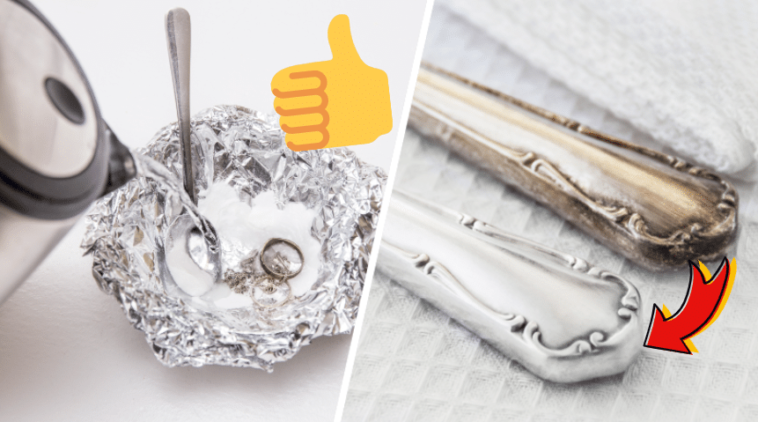Whether in the form of cutlery or platters, silverware can bring a touch of refinement and elegance to any table. However, daily use and time can tarnish and oxidize old silverware, making it less beautiful and less shiny. Fortunately, knowing how to clean silverware will restore its shine and splendor. Whether it is tableware, decorative objects or silver jewelry, you can easily revive their beauty and keep them in perfect condition for many years thanks to ecological and economical household products.
How do you make sure it’s really silver before cleaning it?
To avoid using inappropriate cleaning products and carry out appropriate cleaning, it is important to ensure that money is really involved. To find out, the first technique consists of check punch marks. Real silver objects indeed bear hallmarks which indicate their purity. Look for markings such as “925”, “900” or “800”, “Sterling”, “Solid Silver”, “Pure Silver” or “Fine Silver” which will mean the item is made of at least 92.5 % pure silver. A head of Minerva or Mercury can also help authenticate the metal.
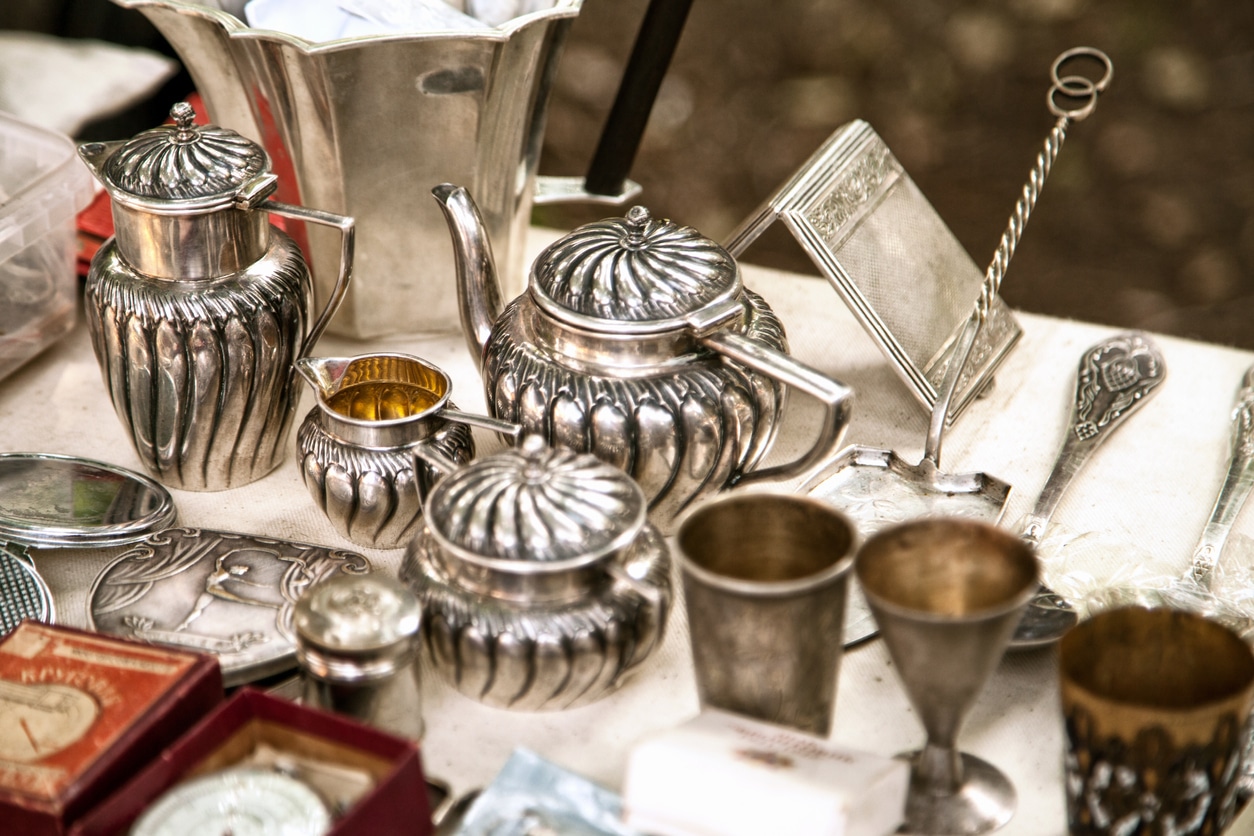
Furthermore, real money is not not magnetic. If you use a magnet and the object is attracted, then it is not pure silver. Also note that silver is dense and heavy, and makes a bell sound when tapped. Doubt persist? To avoid having to buy a commercial acid test kit, you can place a drop of bleach on an inconspicuous corner or an ice cube on a flat surface. In the case of bleach, blackening will indicate that it is silver or silver plated. Regarding the ice cube, it will melt immediately if it is silver.
How to clean and shine silverware?
1) Soapy water
For daily maintenance or for lightly soiled vintage silver piecessimple soapy water may be enough to remove stains. However, you should opt for a soap or dishwashing liquid without chlorine, citric acid and citrus scent (lemon, etc.). Simply wash the dishes as usual with your dishwashing detergent, but be sure to rinse thoroughly, then dry and buff the silver with a chamois to restore its shine.
2) White vinegar to clean silverware

Let your silverware soak for at least two hours in a container filled with vinegar. Next, carefully rinse each silver item you have submerged, then dry them immediately with a soft, lint-free cloth (preferably a chamois or microfiber cloth).
3) Ashes
Dampen a soft cloth or an old toothbrush, then take a little chimney ash powder with. Next, scrub each piece of your silverware carefully. Remember to add ashes regularly to ensure very effective care. To finish the ‘renovation’ and restore the shine to the silverware, all you have to do is rinse it well before wiping it with a soft cloth, such as chamois.
4) Potato cooking water to clean silverware
It may seem unusual, but the cooking water from your potatoes can be used to clean your floors as much as your vintage silver pieces. After filtering this precious liquid, soak your silverware in it overnight for optimal results. The next day, all you have to do is rinse everything, then dry each piece well with a chamois for gentle drying and polishing.
5) Toothpaste: the quick solution
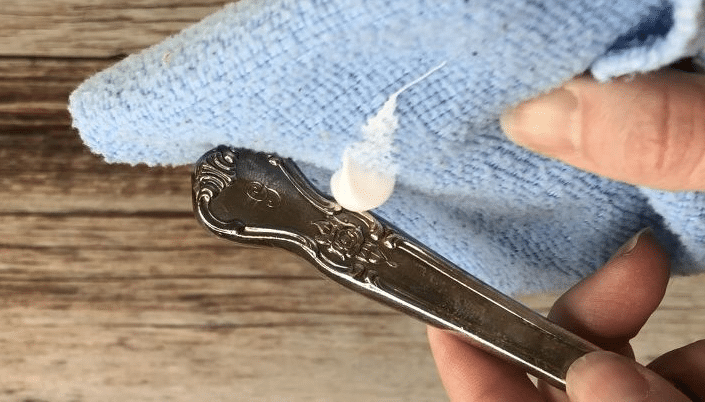
Let’s stick with the unusual tips, this time with toothpaste which seems ideal for cleaning and shining all surfaces in the house (or almost!). To do this, simply apply it to the silver using an old toothbrush. Above all, make sure to rub gently so as not to scratch the silver. After thorough rinsing, proceed to drying and buffing with chamois.
6) Lemon against the oxidation of silverware
To eliminate traces of oxidation (without damaging any precious stones present on the jewelry or decoration to be treated), lemon is the ideal solution. To do this, dip a toothbrush in fresh lemon juice and scrub the silver. Leave it on for a few minutes, then rinse and dry everything well.
7) Baking soda to clean and revive silverware
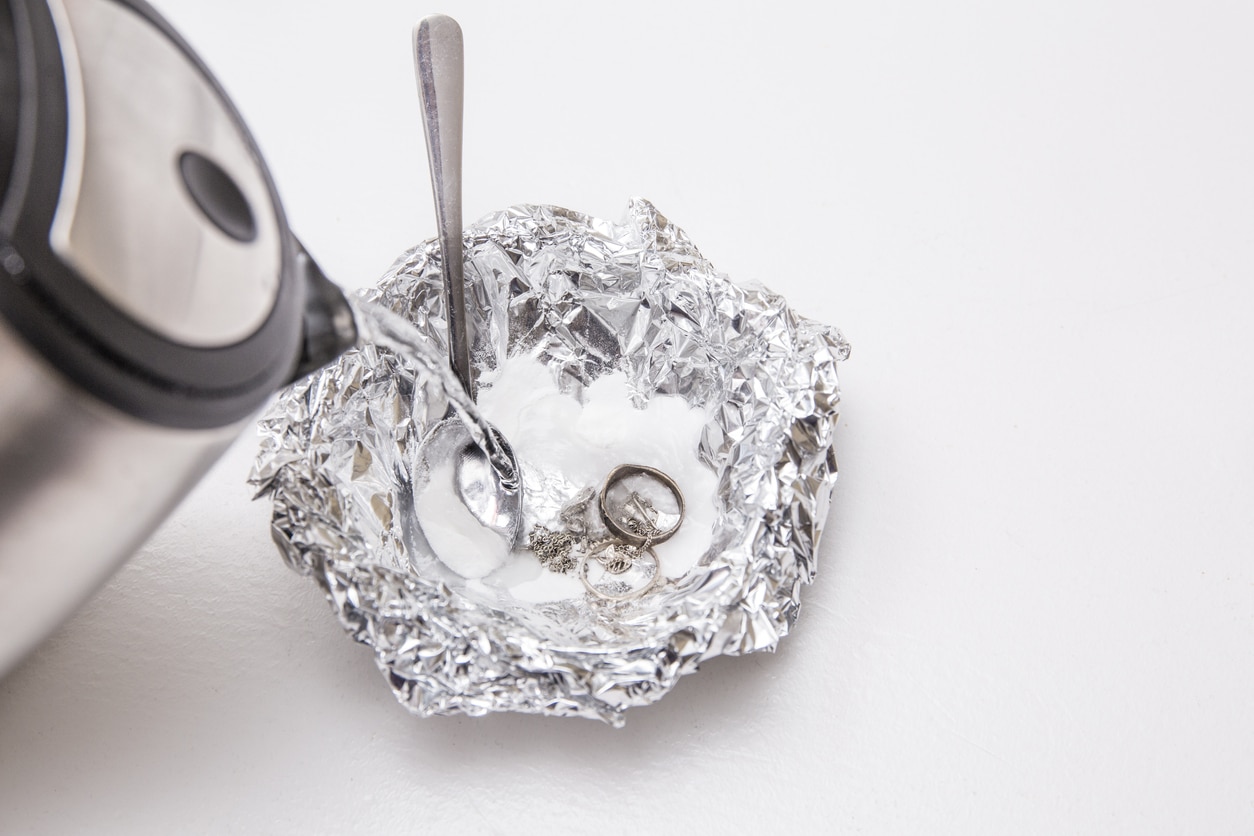
Baking soda is THE magic solution for restoring shine to tarnished and blackened silverware. To do this, follow these steps! First, place aluminum foil in a container, then place your object on top. Then sprinkle baking soda on top and cover everything with boiling water. Leave it to act for a few moments: a chemical reaction will occur. You will then just have to collect the object and wipe it with a clean cloth. For simple cleaning, a paste made from water and this white powder taken with a toothbrush will be more than enough. So don’t skimp on rinsing and drying gently with the chamois.
Good to know: baking soda will not be suitable for a silver piece adorned with precious stones !
8) Household alcohol for effective cleaning
For maintenance, mix equal parts mineral water and household alcohol and apply this mixture using a soft cloth. If necessary, use a toothbrush to reach hard-to-reach corners of your silver trinkets or for a more precise gesture. Finally, rinse and wipe with a soft cloth (chamois or microfiber).
9) Salt water as a replacement for bicarbonate
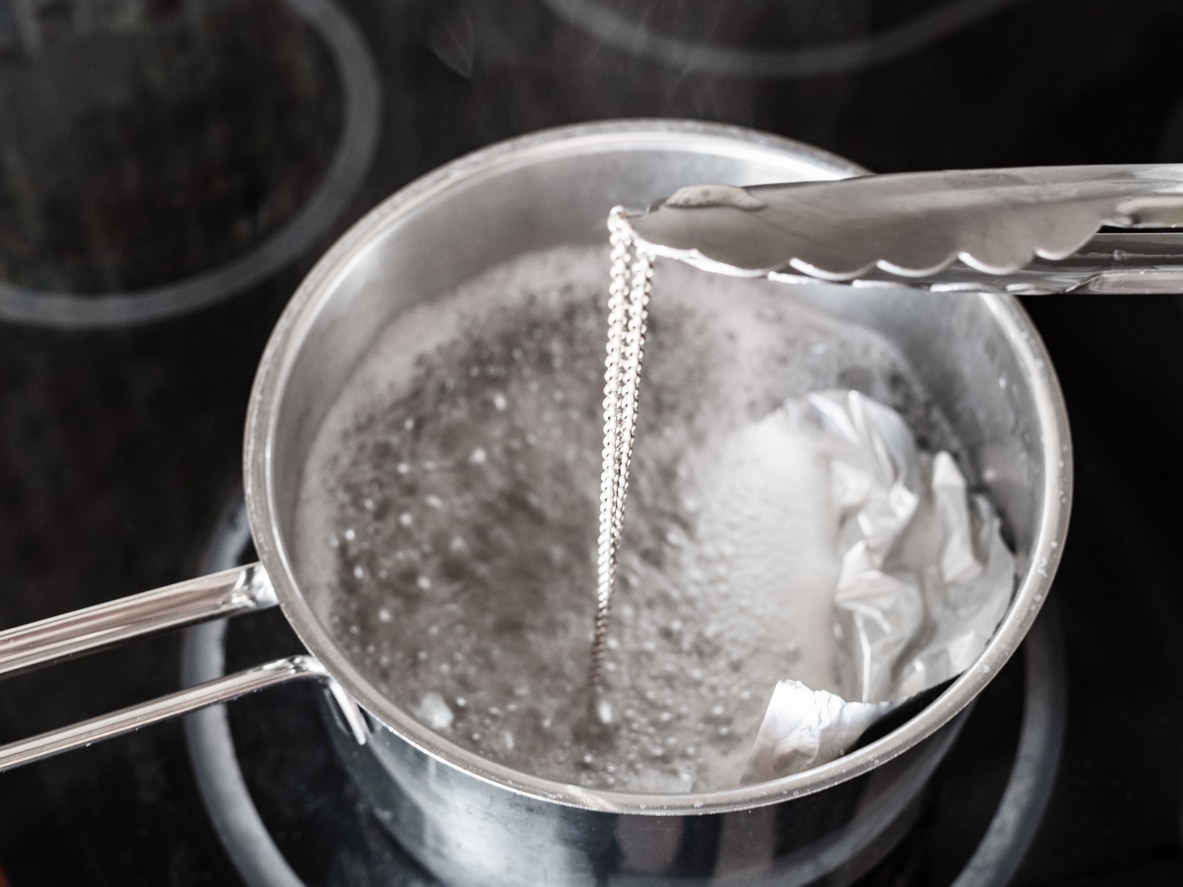
Pour give a nice shine to blackened silverwareplace it in a container where you have already placed a sheet of aluminum foil. Next, add a generous amount of coarse salt and cover with boiling water. (You can also put the aluminum, coarse salt and water to boil with the silverware inside if you wish. Leave for 5 minutes, then rinse well and wipe with a soft cloth.
10) Cornstarch
This is just one of many, many amazing uses for cornstarch! Form a paste with water and cornstarch which you will apply with a damp cloth. Then let it dry and use gauze or a soft cloth to remove any remaining traces of powder while polishing the silver.
11) Ketchup to clean and shine silverware
To restore shine to tarnished silver, nothing beats… ketchup! It allowsremove oxidation stains with disconcerting ease. To do this, take a little of this sauce with a toothbrush or cloth and rub the areas to be treated well. After about fifteen minutes of application, all you have to do is rinse and give a good wipe with a soft cloth to polish.
12) Beer
A beer bath for several hours, or even overnight, will clean your silverware effortlessly. The next day, don’t forget to rinse and dry the silver well!
Mistakes to avoid when cleaning silverware

-If you allow silverware to become tarnished and damaged for too long, it can become difficult to clean, which can result in damage to the item when cleaning. So be careful to clean silverware regularly to maintain its shine.
-To do this, never use abrasive products. Steel sponges or oven cleaner can scratch silver and remove its shine, while bleach or ammonia can permanently damage it.
-Also, do not leave the silver in water for too long. Prolonged soaking of silver in water can lead to damage such as corrosion and discoloration.
-For this same reason and to avoid water stains, be sure to always dry your silver coins properly. To do this, use a soft, clean cloth to dry the silver thoroughly.
-Finally, be sure to store your silverware in a dry place and out of direct sunlight. Also avoid storing silver in contact with other metals (especially stainless steel), as this could cause a chemical reaction that could damage the silver.
Can silverware be put in the dishwasher?
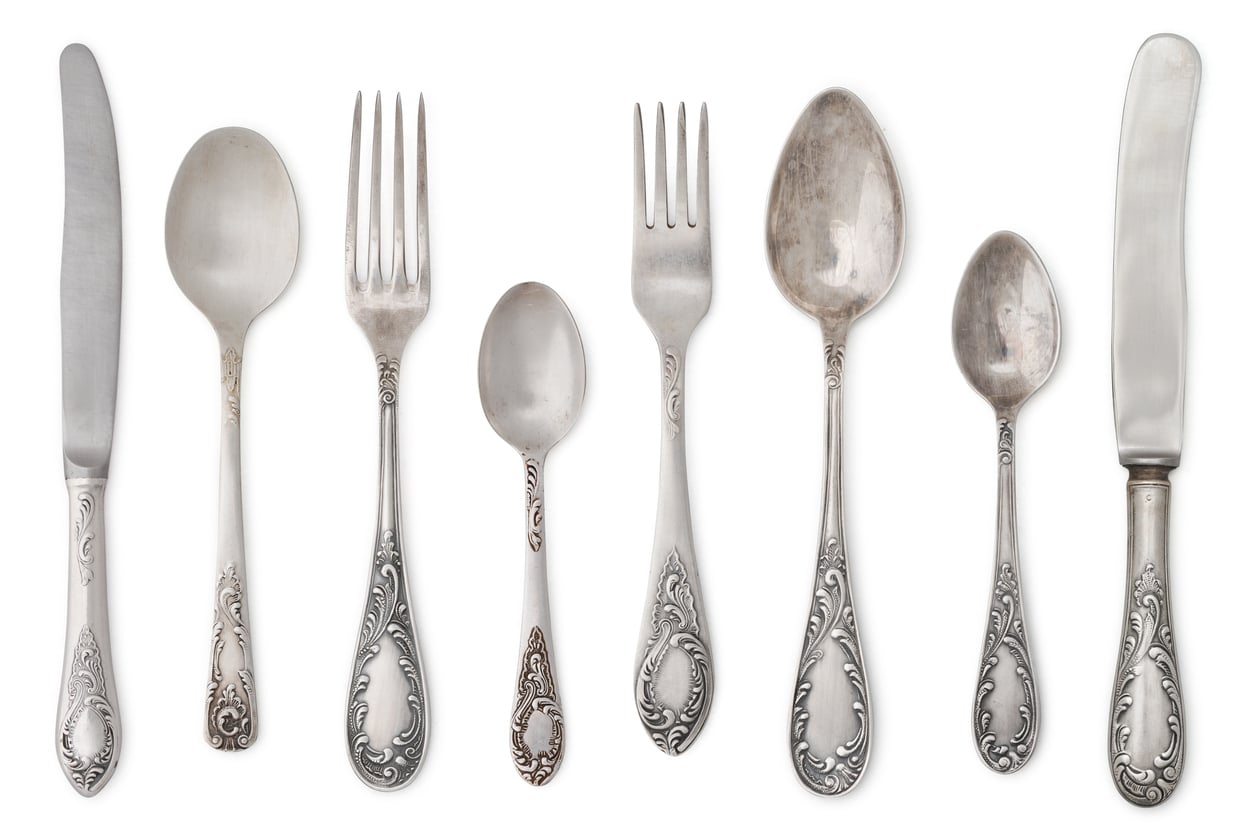
To extend the life of your silverware, always prefer hand washing. It is in fact generally not recommended to put silverware in the dishwasher. Chemicals and heat can damage it and cause stains, corrosion and scratches. Additionally, silver cutlery can bang together during the wash cycle, which can also cause scratches and damage.
However, if you occasionally have to clean your silverware in the dishwasher, you will need to follow a few rules:
-Use a mild acid-free and chlorine-free detergentif possible specially designed for silverware.
-Moreover, avoid high temperature wash cyclesas it may damage the silver.
-Use low temperature wash cycles instead. After washing, remember to dry the silverware carefully with a soft, clean cloth.
-Avoid letting silverware air dry, as this can leave water stains.
-Finally, Also avoid mixing silverware with other metals. in the dishwasher, as this can cause a chemical reaction that damages the silver. Place the stainless steel in a separate basket or do two separate washes.


